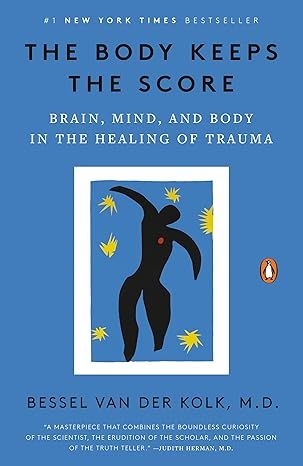The Body Keeps the Score: Brain, Mind, and Body in the Healing of Trauma
4.8
-
74,827 ratings
#1 New York Times bestseller
“Essential reading for anyone interested in understanding and treating traumatic stress and the scope of its impact on society.” —Alexander McFarlane, Director of the Centre for Traumatic Stress Studies
A pioneering researcher transforms our understanding of trauma and offers a bold new paradigm for healing in this New York Times bestseller
Trauma is a fact of life. Veterans and their families deal with the painful aftermath of combat; one in five Americans has been molested; one in four grew up with alcoholics; one in three couples have engaged in physical violence. Dr. Bessel van der Kolk, one of the world’s foremost experts on trauma, has spent over three decades working with survivors. In The Body Keeps the Score, he uses recent scientific advances to show how trauma literally reshapes both body and brain, compromising sufferers’ capacities for pleasure, engagement, self-control, and trust. He explores innovative treatments—from neurofeedback and meditation to sports, drama, and yoga—that offer new paths to recovery by activating the brain’s natural neuroplasticity. Based on Dr. van der Kolk’s own research and that of other leading specialists, The Body Keeps the Score exposes the tremendous power of our relationships both to hurt and to heal—and offers new hope for reclaiming lives.
Kindle
$14.99
Available instantly
Audiobook
$0.00
with membership trial
Hardcover
$16.93
Paperback
$13.49
Ships from
Amazon.com
Payment
Secure transaction
ISBN-10
0143127748
ISBN-13
978-0143127741
Print length
464 pages
Language
English
Publisher
Penguin Books
Publication date
September 07, 2015
Dimensions
1.1 x 5.4 x 8.4 inches
Item weight
12.4 ounces
Popular Highlights in this book
For real change to take place, the body needs to learn that the danger has passed and to live in the reality of the present.
Highlighted by 33,330 Kindle readers
Trauma results in a fundamental reorganization of the way mind and brain manage perceptions. It changes not only how we think and what we think about, but also our very capacity to think.
Highlighted by 27,388 Kindle readers
Being traumatized means continuing to organize your life as if the trauma were still going on—unchanged and immutable—as every new encounter or event is contaminated by the past.
Highlighted by 25,984 Kindle readers
Product details
ASIN :
B00G3L1C2K
File size :
10018 KB
Text-to-speech :
Enabled
Screen reader :
Supported
Enhanced typesetting :
Enabled
X-Ray :
Enabled
Word wise :
Enabled
Editorial Reviews
“The trauma caused by childhood neglect, sexual or domestic abuse and war wreaks havoc in our bodies, says Bessel van der Kolk in The Body Keeps the Score. . . . Van der Kolk draws on thirty years of experience to argue powerfully that trauma is one of the West’s most urgent public health issues. . . . Packed with science and human stories, the book is an intense read. . . . [T]he struggle and resilience of his patients is very moving.” —Shaoni Bhattacharya, New Scientist
“War zones may be nearer than you think, as the 25 percent of US citizens raised with alcoholic relatives might attest. Psychiatrist Bessel van der Kolk argues, moreover, that severe trauma is ‘encoded in the viscera’ and demands tailored approaches that enable people to experience deep relief from rage and helplessness. In a narrative packed with decades of findings and case studies, he traces the evolution of treatments from the ‘chemical coshes’ of the 1970s to neurofeedback, mindfulness and other nuanced techniques.” —Nature
“An astonishing amount of information on almost every aspect of trauma experience, research, interventions, and theories is brought together in this book, which . . . has a distinctly holistic feel to it. The title suggests that what will be explored is how the body retains the imprints of trauma. However, it delivers much more than this, delving into how the brain is impacted by overwhelming traumatic events, and is studded with sections on neuroscience which draw on the author’s own numerous studies as well as that of his peers. In addition, it investigates the effects of adverse childhood attachment patterns, child abuse, and chronic and long-term abuse. . . . [T]his book is a veritable goldmine of information.” —European Journal of Psychotraumatology
“Dr. van der Kolk . . . has written a fascinating and empowering book about trauma and its effects. He uses modern neuroscience to demonstrate that trauma physically affects the brain and the body, causing anxiety, rage, and the inability to concentrate. Victims have problems remembering, trusting, and forming relationships. They have lost control. Although news reports and discussions tend to focus on war veterans, abused children, domestic violence victims, and victims of violent crime suffer as well. Using a combination of traditional therapy techniques and alternative treatments such as EMDR, yoga, neurofeedback, and theater, patients can regain control of their bodies and rewire their brains so that they can rebuild their lives. The author uses case histories to demonstrate the process. He includes a resource list, bibliography, and extensive notes. This accessible book offers hope and inspiration to those who suffer from trauma and those who care for them. It is an outstanding addition to all library collections. —Medical Library Association, Consumer Connections
“[A] wonderful new book that everyone involved with trauma ought to read and have available. . . . [B]eautifully, compellingly and sweepingly written in its grand vision of integrating medical, psychological and mixed or alternative approaches, based on a careful reading of the client and a holistic mind-body view. . . . There are very few practitioners who could not learn from this book and become more effective, as well as inspired, by reading and studying it.” —Henry Strick van Linschoten, European Society For Trauma And Dissociation Newsletter
“Psychological trauma can befall anyone, not just soldiers, refugees, or victims of rape. . . . This important and helpful book makes sense of suffering and offers opportunity for healing.” —Booklist
“[C]omprehensive in scope. This valuable work . . . offers hope for the millions of sufferers and their families seeking meaningful treatment and relief from the ongoing pain of trauma.” —Library Journal (Starred Review)
“Dr. van der Kolk’s masterpiece combines the boundless curiosity of the scientist, the erudition of the scholar, and the passion of the truth teller.” —Judith Herman, M.D., clinical professor of psychiatry, Harvard Medical School; author of Trauma and Recovery
“This is an absolutely fascinating and clearly written book by one of the nation’s most experienced physicians in the field of emotional trauma. The Body Keeps the Score helps us understand how life experiences play out in the function and the malfunction of our bodies, years later.” —Vincent J. Felitti, M.D., chief of preventative medicine, emeritus, Kaiser Permanente San Diego; co-principal investigator, ACE study
“In this inspirational work which seamlessly weaves keen clinical observation, neuroscience, historical analysis, the arts, and personal narrative, Dr. van der Kolk has created an authoritative guide to the effects of trauma, and pathways to recovery. The book is full of wisdom, humanity, compassion and scientific insight, gleaned from a lifetime of clinical service, research and scholarship in the field of traumatic stress. A must read for mental health and other health care professionals, trauma survivors, their loved ones, and those who seek clinical, social, or political solutions to the cycle of trauma and violence in our society.” —Rachel Yehuda, Ph.D., professor of psychiatry and neuroscience; director of the Traumatic Stress Studies Division at the Mount Sinai School of Medicine, New York, NY
“Breathtaking in its scope and breadth, The Body Keeps the Score is a seminal work by one of the preeminent pioneers in trauma research and treatment. This essential book unites the evolving neuroscience of trauma research with an emergent wave of body-oriented therapies and traditional mind/body practices that go beyond symptom relief and connect us with our vital energy and here-and-now presence.” —Peter A. Levine, Ph.D., author of In an Unspoken Voice: How the Body Releases Trauma and Restores Goodness
“In The Body Keeps the Score we share the author’s courageous journey into the parallel dissociative worlds of trauma victims and the medical and psychological disciplines that are meant to provide relief. In this compelling book we learn that as our minds desperately try to leave trauma behind, our bodies keep us trapped in the past with wordless emotions and feelings. These inner disconnections cascade into ruptures in social relationships with disastrous effects on marriages, families, and friendships. Van der Kolk offers hope by describing treatments and strategies that have successfully helped his patients reconnect their thoughts with their bodies. We leave this shared journey understanding that only through fostering self-awareness and gaining an inner sense of safety will we, as a species, fully experience the richness of life. —Stephen W. Porges, Ph.D., professor of psychiatry, University of North Carolina at Chapel Hill; author of The Polyvagal Theory: Neurophysiological Foundations of Emotions, Attachment, Communication, and Self-Regulation
Sample
PROLOGUE
FACING TRAUMA
One does not have be a combat soldier, or visit a refugee camp in Syria or the Congo to encounter trauma. Trauma happens to us, our friends, our families, and our neighbors. Research by the Centers for Disease Control and Prevention has shown that one in five Americans was sexually molested as a child; one in four was beaten by a parent to the point of a mark being left on their body; and one in three couples engages in physical violence. A quarter of us grew up with alcoholic relatives, and one out of eight witnessed their mother being beaten or hit.1
As human beings we belong to an extremely resilient species. Since time immemorial we have rebounded from our relentless wars, countless disasters (both natural and man-made), and the violence and betrayal in our own lives. But traumatic experiences do leave traces, whether on a large scale (on our histories and cultures) or close to home, on our families, with dark secrets being imperceptibly passed down through generations. They also leave traces on our minds and emotions, on our capacity for joy and intimacy, and even on our biology and immune systems.
Trauma affects not only those who are directly exposed to it, but also those around them. Soldiers returning home from combat may frighten their families with their rages and emotional absence. The wives of men who suffer from PTSD tend to become depressed, and the children of depressed mothers are at risk of growing up insecure and anxious. Having been exposed to family violence as a child often makes it difficult to establish stable, trusting relationships as an adult.
Trauma, by definition, is unbearable and intolerable. Most rape victims, combat soldiers, and children who have been molested become so upset when they think about what they experienced that they try to push it out of their minds, trying to act as if nothing happened, and move on. It takes tremendous energy to keep functioning while carrying the memory of terror, and the shame of utter weakness and vulnerability.
While we all want to move beyond trauma, the part of our brain that is devoted to ensuring our survival (deep below our rational brain) is not very good at denial. Long after a traumatic experience is over, it may be reactivated at the slightest hint of danger and mobilize disturbed brain circuits and secrete massive amounts of stress hormones. This precipitates unpleasant emotions intense physical sensations, and impulsive and aggressive actions. These posttraumatic reactions feel incomprehensible and overwhelming. Feeling out of control, survivors of trauma often begin to fear that they are damaged to the core and beyond redemption.
The first time I remember being drawn to study medicine was at a summer camp when I was about fourteen years old. My cousin Michael kept me up all night explaining the intricacies of how kidneys work, how they secrete the body’s waste materials and then reabsorb the chemicals that keep the system in balance. I was riveted by his account of the miraculous way the body functions. Later, during every stage of my medical training, whether I was studying surgery, cardiology, or pediatrics, it was obvious to me that the key to healing was understanding how the human organism works. When I began my psychiatry rotation, however, I was struck by the contrast between the incredible complexity of the mind and the ways that we human beings are connected and attached to one another, and how little psychiatrists knew about the origins of the problems they were treating. Would it be possible one day to know as much about brains, minds, and love as we do about the other systems that make up our organism?
We are obviously still years from attaining that sort of detailed understanding, but the birth of three new branches of science has led to an explosion of knowledge about the effects of psychological trauma, abuse, and neglect. Those new disciplines are neuroscience, the study of how the brain supports mental processes; developmental psychopathology, the study of the impact of adverse experiences on the development of mind and brain; and interpersonal neurobiology, the study of how our behavior influences the emotions, biology, and mind-sets of those around us.
Research from these new disciplines has revealed that trauma produces actual physiological changes, including a recalibration of the brain’s alarm system, an increase in stress hormone activity, and alterations in the system that filters relevant information from irrelevant. We now know that trauma compromises the brain area that communicates the physical, embodied feeling of being alive. These changes explain why traumatized individuals become hypervigilant to threat at the expense of spontaneously engaging in their day-to-day lives. They also help us understand why traumatized people so often keep repeating the same problems and have such trouble learning from experience. We now know that their behaviors are not the result of moral failings or signs of lack of willpower or bad character—they are caused by actual changes in the brain.
This vast increase in our knowledge about the basic processes that underlie trauma has also opened up new possibilities to palliate or even reverse the damage. We can now develop methods and experiences that utilize the brain’s own natural neuroplasticity to help survivors feel fully alive in the present and move on with their lives. There are fundamentally three avenues: 1) top down, by talking, (re-) connecting with others, and allowing ourselves to know and understand what is going on with us, while processing the memories of the trauma; 2) by taking medicines that shut down inappropriate alarm reactions, or by utilizing other technologies that change the way the brain organizes information, and 3) bottom up: by allowing the body to have experiences that deeply and viscerally contradict the helplessness, rage, or collapse that result from trauma. Which one of these is best for any particular survivor is an empirical question. Most people I have worked with require a combination.
This has been my life’s work. In this effort I have been supported by my colleagues and students at the Trauma Center, which I founded thirty years ago. Together we have treated thousands of traumatized children and adults: victims of child abuse, natural disasters, wars, accidents, and human trafficking; people who have suffered assaults by intimates and strangers. We have a long tradition of discussing all our patients in great depth at weekly treatment team meetings and carefully tracking how well different forms of treatment work for particular individuals.
Our principal mission has always been to take care of the children and adults who have come to us for treatment, but from the very beginning we also have dedicated ourselves to conducting research to explore the effects of traumatic stress on different populations and to determine what treatments work for whom. We have been supported by research grants from the National Institute of Mental Health, the National Center for Complementary and Alternative Medicine, the Centers for Disease Control, and a number of private foundations to study the efficacy of many different forms of treatment, from medications to talking, yoga, EMDR, theater, and neurofeedback.
The challenge is: How can people gain control over the residues of past trauma and return to being masters of their own ship? Talking, understanding, and human connections help, and drugs can dampen hyperactive alarm systems. But we will also see that the imprints from the past can be transformed by having physical experiences that directly contradict the helplessness, rage, and collapse that are part of trauma, and thereby regaining self-mastery. I have no preferred treatment modality, as no single approach fits everybody, but I practice all the forms of treatment that I discuss in this book. Each one of them can produce profound changes, depending on the nature of the particular problem and the makeup of the individual person.
I wrote this book to serve as both a guide and an invitation—an invitation to dedicate ourselves to facing the reality of trauma, to explore how best to treat it, and to commit ourselves, as a society, to using every means we have to prevent it.
PART ONE
THE REDISCOVERY OF TRAUMA
CHAPTER 1
LESSONS FROM VIETNAM VETERANS
I became what I am today at the age of twelve, on a frigid overcast day in the winter of 1975. . . . That was a long time ago, but it’s wrong what they say about the past. . . . Looking back now, I realize I have been peeking into that deserted alley for the last twenty-six years.
—Khaled Hosseini, The Kite Runner
Some people’s lives seem to flow in a narrative; mine had many stops and starts. That’s what trauma does. It interrupts the plot. . . . It just happens, and then life goes on. No one prepares you for it.
—Jessica Stern, Denial: A Memoir of Terror
The Tuesday after the Fourth of July weekend, 1978, was my first day as a staff psychiatrist at the Boston Veterans Administration Clinic. As I was hanging a reproduction of my favorite Breughel painting, “The Blind Leading the Blind,” on the wall of my new office, I heard a commotion in the reception area down the hall. A moment later a large, disheveled man in a stained three-piece suit, carrying a copy of Soldier of Fortune magazine under his arm, burst through my door. He was so agitated and so clearly hungover that I wondered how I could possibly help this hulking man. I asked him to take a seat, and tell me what I could do for him.
His name was Tom. Ten years earlier he had been in the Marines, doing his service in Vietnam. He had spent the holiday weekend holed up in his downtown-Boston law office, drinking and looking at old photographs, rather than with his family. He knew from previous years’ experience that the noise, the fireworks, the heat, and the picnic in his sister’s backyard against the backdrop of dense early-summer foliage, all of which reminded him of Vietnam, would drive him crazy. When he got upset he was afraid to be around his family because he behaved like a monster with his wife and two young boys. The noise of his kids made him so agitated that he would storm out of the house to keep himself from hurting them. Only drinking himself into oblivion or riding his Harley-Davidson at dangerously high speeds helped him to calm down.
Nighttime offered no relief—his sleep was constantly interrupted by nightmares about an ambush in a rice paddy back in ’Nam, in which all the members of his platoon were killed or wounded. He also had terrifying flashbacks in which he saw dead Vietnamese children. The nightmares were so horrible that he dreaded falling asleep and he often stayed up for most of the night, drinking. In the morning his wife would find him passed out on the living room couch, and she and the boys had to tiptoe around him while she made them breakfast before taking them to school.
Filling me in on his background, Tom said that he had graduated from high school in 1965, the valedictorian of his class. In line with his family tradition of military service he enlisted in the Marine Corps immediately after graduation. His father had served in World War II in General Patton’s army, and Tom never questioned his father’s expectations. Athletic, intelligent, and an obvious leader, Tom felt powerful and effective after finishing basic training, a member of a team that was prepared for just about anything. In Vietnam he quickly became a platoon leader, in charge of eight other Marines. Surviving slogging through the mud while being strafed by machine-gun fire can leave people feeling pretty good about themselves—and their comrades.
At the end of his tour of duty Tom was honorably discharged, and all he wanted was to put Vietnam behind him. Outwardly that’s exactly what he did. He attended college on the GI Bill, graduated from law school, married his high school sweetheart, and had two sons. Tom was upset by how difficult it was to feel any real affection for his wife, even though her letters had kept him alive in the madness of the jungle. Tom went through the motions of living a normal life, hoping that by faking it he would learn to become his old self again. He now had a thriving law practice and a picture-perfect family, but he sensed he wasn’t normal; he felt dead inside.
Although Tom was the first veteran I had ever encountered on a professional basis, many aspects of his story were familiar to me. I grew up in postwar Holland, playing in bombed-out buildings, the son of a man who had been such an outspoken opponent of the Nazis that he had been sent to an internment camp. My father never talked about his war experiences, but he was given to outbursts of explosive rage that stunned me as a little boy. How could the man I heard quietly going down the stairs every morning to pray and read the Bible while the rest of the family slept have such a terrifying temper? How could someone whose life was devoted to the pursuit of social justice be so filled with anger? I witnessed the same puzzling behavior in my uncle, who had been captured by the Japanese in the Dutch East Indies (now Indonesia) and sent as a slave laborer to Burma, where he worked on the famous bridge over the river Kwai. He also rarely mentioned the war, and he, too, often erupted into uncontrollable rages.
As I listened to Tom, I wondered if my uncle and my father had had nightmares and flashbacks—if they, too, had felt disconnected from their loved ones and unable to find any real pleasure in their lives. Somewhere in the back of my mind there must also have been my memories of my frightened—and often frightening—mother, whose own childhood trauma was sometimes alluded to and, I now believe, was frequently reenacted. She had the unnerving habit of fainting when I asked her what her life was like as a little girl and then blaming me for making her so upset.
Reassured by my obvious interest, Tom settled down to tell me just how scared and confused he was. He was afraid that he was becoming just like his father, who was always angry and rarely talked with his children—except to compare them unfavorably with his comrades who had lost their lives around Christmas 1944, during the Battle of the Bulge.
As the session was drawing to a close, I did what doctors typically do: I focused on the one part of Tom’s story that I thought I understood—his nightmares. As a medical student I had worked in a sleep laboratory, observing people’s sleep/dream cycles, and had assisted in writing some articles about nightmares. I had also participated in some early research on the beneficial effects of the psychoactive drugs that were just coming into use in the 1970s. So, while I lacked a true grasp of the scope of Tom’s problems, the nightmares were something I could relate to, and as an enthusiastic believer in better living through chemistry, I prescribed a drug that we had found to be effective in reducing the incidence and severity of nightmares. I scheduled Tom for a follow-up visit two weeks later.
When he returned for his appointment, I eagerly asked Tom how the medicines had worked. He told me he hadn’t taken any of the pills. Trying to conceal my irritation, I asked him why. “I realized that if I take the pills and the nightmares go away,” he replied, “I will have abandoned my friends, and their deaths will have been in vain. I need to be a living memorial to my friends who died in Vietnam.”
I was stunned: Tom’s loyalty to the dead was keeping him from living his own life, just as his father’s devotion to his friends had kept him from living. Both father’s and son’s experiences on the battlefield had rendered the rest of their lives irrelevant. How had that happened, and what could we do about it? That morning I realized I would probably spend the rest of my professional life trying to unravel the mysteries of trauma. How do horrific experiences cause people to become hopelessly stuck in the past? What happens in people’s minds and brains that keeps them frozen, trapped in a place they desperately wish to escape? Why did this man’s war not come to an end in February 1969, when his parents embraced him at Boston’s Logan International Airport after his long flight back from Da Nang?
Tom’s need to live out his life as a memorial to his comrades taught me that he was suffering from a condition much more complex than simply having bad memories or damaged brain chemistry—or altered fear circuits in the brain. Before the ambush in the rice paddy, Tom had been a devoted and loyal friend, someone who enjoyed life, with many interests and pleasures. In one terrifying moment, trauma had transformed everything.
Read more
About the authors
Bessel van der Kolk
Bessel van der Kolk (born 1943) is a Boston based psychiatrist noted for his research in the area of post-traumatic stress since the 1970s. His work focuses on the interaction of attachment, neurobiology, and developmental aspects of trauma’s effects on people. His major publication, the New York Times bestseller, 'The Body keeps the Score', talks about how the role of trauma in psychiatric illness has changed over the past 20 years; what we have learned about the ways the brain is shaped by traumatic experiences; how traumatic stress is a response of the entire organism and how that knowledge needs be integrated into healing practices.
Read more
Reviews
Customer reviews
4.8 out of 5
74,827 global ratings
S. Rose
5
My Life-Saving Trauma Bible
Reviewed in the United States on January 19, 2021
Verified Purchase
“I think this man is suffering from memories.”
So, this book changed my life. No, really. In fact, it’s saved it.
I have severe PTSD. And despite years of therapy, it seemed to be getting worse instead of better. My flashbacks were occurring more and more often. I was becoming more and more lethargic and frozen in time. And suicide was constantly just there in my mind. Constant. I’d even set a date.
And then my insurance quit paying for my therapy.
As a last, desperate grasp for help, I started to read this book.
I have never read anything more validating and more hopeful. To see the brain scans and hear the science that explained exactly what has happened to my brain, what is going on during my flashbacks and why I’m always physically sick—all the times I’ve gone to a doctor in pain or feeling like I’m having a heart attack or a stroke only to be told they can’t find anything wrong—brought me to tears. It gave me all the answers I’ve been searching for. It gave everything a scientific, medical explanation—and a path to healing.
He explained why all of my EMDR therapy wasn’t working—it was because my therapists (bless them!) were doing it wrong. And I’ve been able to take what I’ve learned from my therapists and this book and do EMDR on my own, and today... today I feel more like my old, genuine self, than I have in years. The shadow of suicidal thoughts no longer follows me. I feel light. And I have hope—genuine hope—that I actually can get better! I’m always telling people they can get better and there’s hope for them... but I haven’t felt that way about myself. Now, I do. I haven’t had that hope in a long, long time. And I even think, after years of struggling and finally making such great progress in such a short time, maybe—just maybe—I can be cured. I never thought I’d say that! The future is so exciting to me now!
If you have trauma, do be warned—Dr. van der Kolk talks a lot about his clients and their traumatic experiences and it can be very triggering. Some of the details I felt he definitely could’ve left out, honestly. However, the scientific information, the validation and the information on how to heal trauma, has made this book absolutely priceless to me. It’s my trauma bible. I’ll be re-reading it in the future and constantly referring to it.
Edit: I keep seeing reviews on here from people who were super upset by the story of the Vietnam vet who murdered a family, raped the mother and left her to die. Honestly, I flipped out at that part, too (aka, had a flashback), in large part because I misunderstood what Dr. van der Kolk was trying to say. I thought for a moment that he was trying to justify what the man did, and had to email my old therapist about it. She read the scene and encouraged me to reread his conclusion, and pointed out to me that he’s actually saying how difficult it was to try to treat him objectively because what the man had done was an absolute atrocity. He never actually justifies it. He calls it an atrocity. It’s just worded weird, and if you’re already triggered by what you’ve just read, it is easily misunderstood. I hope he clarifies this in future editions. You have to keep in mind that, van der Kolk’s target audience is actually other therapists. For this reason, it was difficult for me to read. I was violently attacked and molested at 5-years-old and repeatedly raped and abused as a teenager. His going over other people’s abuse is overly detailed at times and I had to skip many of those scenes.
However, I don’t hold any of this against him at all. The information in this book has changed my life, I feel seen and validated, and I stand by that almost a year after reading it. I keep it right on my writing desk where it’s easily found for reference. Am I cured yet? No. Did my flashbacks stop? Nope. This year has been an unexpected nightmare full of triggers. But I’ve made so much progress. And I have hope. And that’s what I need to make it through each day. I sincerely believe that, through a lot of work (which I’m willing to do!), I can be cured in time. And all of that started with this book.
Read more
402 people found this helpful
Laura Belk
5
just get past the intro which is hard to read b/c triggering: the rest of the book isn't like that
Reviewed in the United States on May 15, 2024
Verified Purchase
Major trigger warning for the intro: trauma
Please don't let the intro stop you. This book is soooooooo worth it.
I have friends who stopped reading this b/c the intro is so painful to read about the veteran in the rice patty in Vietnam; it's triggering. I have to insist that they keep reading because the rest of the book is not triggering or like the intr
You learn sooo much from this book. Well written. Easy to read. I give it to all my friends. Excellent education even for those without trauma.
I gift it to friends.
Read more
5 people found this helpful
Tom Cloyd, MS MA
5
Buy this book!
Reviewed in the United States on September 28, 2014
Verified Purchase
Psychiatrist, professor, world-class researcher, and traumatologist Bessel van der Kolk MD requires no introduction to trauma psychotherapists. My enduring impressions of him over many years is one of relevance, cogency, frankness, and accessibility - served up with a subtle dash of impishness. He tends to be a bit disruptive - something of a provocateur - and everything of his I have ever read has taught me something, confirmed something important, or pushed my thinking in a new direction. When he has something to say, I want to hear it.
However, I almost didn't buy this book: I was put off by the title. Familiar with major reviews of PTSD psychotherapy outcomes research, I know that research support for body-oriented approaches to treating psychological trauma psychopathology is thin at best, and such treatment models simply do not have the research validation of either EMDR (Eye Movement Desensitization and Reprocessing) and PE (Prolonged Exposure), neither of which are especially body-focused.
J. Interlandi's excellent article anticipating publication of this book - "A Revolutionary Approach to Treating PTSD" (New York Times Magazine, 2014.05.22 - available online) - initially supported my fears that for some inexplicable reason van der Kolk was now promoting some treatment model for which we have little confirming research. "Psychomotor therapy is neither widely practiced nor supported by clinical studies," Interlandi informs us. Provocateur he may be, but I'm strongly biased in favor of paying attention to therapies for which we do have solid empirical validation. Our clients do not deserve to be experimental subjects - maybe not even if they agree to this, as I'm not sure they can ever know enough to make a truly informed consent. Knowledge that PTSD and related disorders are usually highly curable, when using the right treatment protocols, sadly remains the possession of a minority of people, even in the professional psychotherapy world.
Yet the account of van der Kolk's therapy work in Interlandi's article is gripping. Becoming completely absorbed in the account, I was convinced. (I've been here before, reading van der Kolk's own accounts of his work.) And so the disruption begins! Deeper into the article, he has me. Van der Kolk's critique of CBT (cognitive behavioral therapy - a general class of therapies) and PE (E. Foa's exposure therapy model) is withering and correct: neither really work. "Trauma has nothing whatsoever to do with cognition...It has to do with your body being reset to interpret the world as a dangerous place....It's not something you can talk yourself out of." Interlandi reports that "That view places him on the fringes of the psychiatric mainstream."
But he's right, and I can't stress this enough. Why? Because as a trauma treatment professional I'm well aware of what the trauma treatment outcomes research actually says. The best current summary of this research well may be chapter 2 of Ecker, et al.'s (2012) "Unlocking the emotional brain". (Buy this book, too!) Ecker et al. brilliantly presents a synthetic summary that encompasses 11 existing therapy models which actually DO cure trauma psychopathology, if done right. In this context, what van der Kolk is doing makes perfect sense. Finally, it appears, the trauma psychotherapy field is moving toward a consensus which has strong credibility.
Van der Kolk's new book has many virtues. Parts One and Two (102 pp) provide a substantial review of the neuropsychology of trauma's impact on a person. It's fun, interesting, informative reading, for professional and layperson alike. Part Three (64 pp) surveys childhood development, attachment experience, and "the hidden epidemic of developmental trauma". Van der Kolk has for years been a leading champion of the idea that there is a type of PTSD which substantially differs from all the rest. It develops in response to chronic child abuse and/or neglect. I completely share his belief that the diagnosis of Developmental Trauma Disorder (sometimes called C-PTSD, with "C" meaning "Complex") is overdue for formal recognition. I find his review of the struggle to legitimize DTD as gripping and distressing as anything else in the book. It is anguishing to know that a major problem exists, AND that the psychiatric establishment simply refuses to acknowledge it. DTD/C-PTSD is no fantasy. We see and treat these people, as children and adults. They exist, and they are nothing like "ordinary" PTSD treatment clients.
Part Four (29 pp) focuses on memory. I've long thought that much writing on treating psychological trauma seems to miss the point: trauma memory is what causes the problem. Deal with that and the symptoms vanish. Why is this so hard to understand? Yet, it is not a common understanding at all. Explaining how trauma memory works is invariably enlightening to my clients. And experiencing what happens when we change the nature of trauma memory is revelatory to someone who's lived with it for years, if not decades. As he does throughout the book, van der Kolk offers fine stories about clients who have experienced exactly what I've seen happen in my clients, making excellent use of what cognitive research tells us: people understand things best through narratives. Offer a good narrative and you convince.
Psychological trauma therapy is complex, but we are now well prepared to launch into the book's core content - Part Five (154 pp), "Paths to Recovery". He gets right to it: we cannot undo the trauma, but we CAN undo its effect on us, and so get our "self" back. Ch. 13 reviews existing therapies. His approach is to repair "Descartes' Error" (see Damásio's 1994 book of that title) by viewing mind and body as a single coherent functional unit. His topical coverage is complete and his critique of current therapies acute - not to be missed.
He then writes of the importance of language (Ch. 14). We construct our narrative mainly in words, and the words we choose are critical. But language is not enough (this anticipates his next two chapters). Our senses encompass a larger world, and it's center is our body, where all our sensory receptors are located. Then he introduces the treatment model he's long advocated: EMDR (Eye Movement Desensitization and Reprocessing). I'm trained in EMDR, and in fact van der Kolk and I had the same instructor for our advanced training: Gerald Puk PhD. Van der Kolk tells an amusing and self-deprecating story about his advanced training experience, in which Puk was able to provide a strong corrective to his approach to clients. This is typical van der Kolk - he's a truth-teller, even when it may put him in a poor light! And,after all, at this point he has nothing to prove to anyone.
Finding an EMDR therapist is not hard (see his "Resources" section). Nor is it hard to find a yoga instructor, and yoga is what he advises for helping a trauma victim get back into their body. Yoga is a wise choice, because it is available, already widely known, and adaptable to a wide range of individuals and capabilities.
There is much more in Part Five, and the focus is on self-empowerment. "Victim no more!" as they say. Most trauma therapists have a keen interest in seeing their clients leave therapy charged up and ready to fully embrace their life - that certainly is my own emphasis. Van der Kolk's thoughts on self-empowerment for those in recovery from psychological trauma will be invaluable to any trauma psychotherapy client.
For psychotherapy professionals, this book will be both delightful and confirming. For everyone else, it will be a readable, gripping, highly educational tour of topics all of which are critical to a successful transition back from the impact of psychological trauma. That he gives prominent though not dominating emphasis to developmental trauma disorders is entirely appropriate. Our society has yet to grasp that child abuse and neglect is a more often chronic than not, and that its impact is largely ignored and poorly treated, if at all. This does not have to be. Get educated (this book will do that), then commit to being an advocate for children as well as for adults impacted by trauma. They all deserve the chance to be healed, and we can now do that. Van der Kolk shows us how.
The physical book: Jacket design is pleasant and interesting. Binding is less so: color of spine wrapping is semi-florescent, and of paper, not cloth. The book feels substantial and pleasant to hold and look at.
Organization -
- 6 pp: prefatory praise by peers and related luminaries (interesting comments from some important people in the field);
- 2 pp: Table of Contents;
- 356 pp: actual text;
- 4 pp: Appendix: Consensus proposed criteria for developmental trauma disorder
- 3 pp: Resources
- 4 pp: Further reading
- 51 pp: Notes
- 21 pp: Index
Read more
2 people found this helpful
Eyes Dark & Mellow
5
Amazingly Engaging Neuroscience
Reviewed in the United States on May 25, 2024
Verified Purchase
The author has a way with words, and is a compelling storyteller. Great case studies. Excellent diagrams are well integrated into the text. It’s a long, tedious journey, but you want to stick with it if you know or interact with trauma victims, or if you want to understand why dysfunctional people (maybe you?) “irrationally”reject paths to better lives.
The author could have unpacked polyvagal theory and shared why it’s controversial since his approach seems to rely heavily on it. His modest bragging about his long association with Harvard eventually gets a little tiresome. But the bottom line is that you will come away with a deeper appreciation of the impacts of trauma, and you may learn that sexual abuse is far more widespread than you’d ever imagined. Apparently, we need better ways to treat trauma instead of medicating its consequences as discrete, independent psychoses.
Read more
4 people found this helpful
JBM
5
Journey Through Trauma Healing
Reviewed in the United States on May 17, 2024
Verified Purchase
"The Body Keeps the Score" by Bessel van der Kolk is not just a book; it's a guiding light through the labyrinth of trauma, offering profound insights and practical tools for healing. As someone who has experienced trauma firsthand, this book has been nothing short of life-changing in my journey towards understanding and processing my experiences.
Comprehensive Understanding: One of the most remarkable aspects of this book is its comprehensive exploration of trauma and its effects on the brain, mind, and body. Van der Kolk draws upon decades of research and clinical experience to provide a deep understanding of how trauma manifests physically, emotionally, and psychologically. His insights shed light on the complex interplay between trauma and various mental health conditions, offering clarity and validation to those who have struggled to make sense of their experiences.
Holistic Approach: "The Body Keeps the Score" emphasizes the importance of taking a holistic approach to trauma healing, addressing not only the psychological aspects but also the physiological and relational dimensions of trauma. Van der Kolk explores a range of therapeutic modalities, from traditional talk therapy to innovative approaches such as EMDR and neurofeedback, demonstrating how each can play a vital role in the healing process. This holistic perspective resonated deeply with me, providing a roadmap for integrating mind, body, and spirit in my own healing journey.
Practical Tools: What sets "The Body Keeps the Score" apart is its emphasis on practical tools and techniques for healing. Van der Kolk offers a wealth of exercises and strategies that readers can incorporate into their daily lives to regulate their nervous systems, cultivate self-awareness, and foster resilience in the face of trauma. From mindfulness practices to yoga and creative expression, these tools empower readers to take an active role in their healing journey, offering hope and agency amidst the darkness of trauma.
Validation and Empowerment: Perhaps the most profound impact of "The Body Keeps the Score" is its validation of the trauma survivor's experience and its message of empowerment. Van der Kolk emphasizes that healing is possible, that survivors are not defined by their trauma, and that they have the capacity to reclaim agency and meaning in their lives. This message of hope and empowerment is a beacon of light for anyone who has felt lost or hopeless in the aftermath of trauma.
In conclusion, "The Body Keeps the Score" is a masterpiece of trauma literature that offers profound insights, practical guidance, and unwavering hope to trauma survivors and professionals alike. It has helped me navigate the darkest corners of my psyche, find solace in the embrace of community, and reclaim a sense of agency and purpose in my life. If you have experienced trauma or work with trauma survivors, I cannot recommend this book highly enough. It has the power to transform lives and ignite a path towards healing, one page at a time.
Read more
6 people found this helpful
Best Sellers

The Great Alone: A Novel
4.6
-
152,447
$5.49

The Four Winds
4.6
-
156,242
$9.99

Winter Garden
4.6
-
72,838
$7.37

The Nightingale: A Novel
4.7
-
309,637
$8.61

Steve Jobs
4.7
-
24,596
$1.78

Iron Flame (The Empyrean, 2)
4.6
-
164,732
$14.99

A Court of Thorns and Roses Paperback Box Set (5 books) (A Court of Thorns and Roses, 9)
4.8
-
26,559
$37.99

Pretty Girls: A Novel
4.3
-
88,539
$3.67
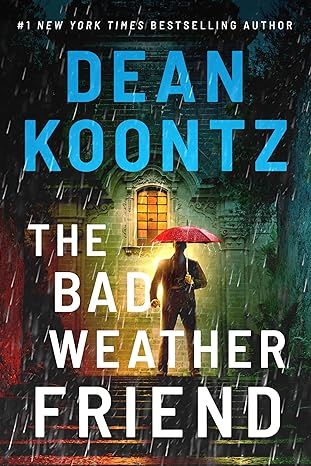
The Bad Weather Friend
4.1
-
34,750
$12.78

Pucking Around: A Why Choose Hockey Romance (Jacksonville Rays Hockey)
4.3
-
41,599
$14.84
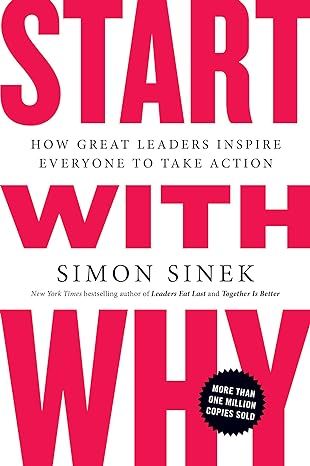
Start with Why: How Great Leaders Inspire Everyone to Take Action
4.6
-
37,152
$9.99
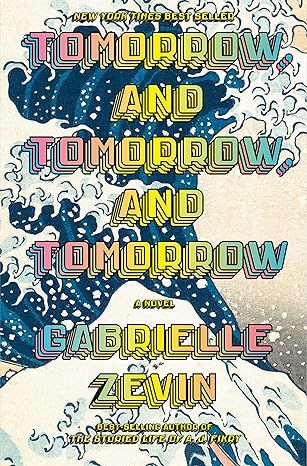
Tomorrow, and Tomorrow, and Tomorrow: A novel
4.4
-
95,875
$13.99

Weyward: A Novel
4.4
-
27,652
$11.99

Tom Lake: A Reese's Book Club Pick
4.3
-
37,302
$15.74

All the Sinners Bleed: A Novel
4.4
-
12,894
$13.55
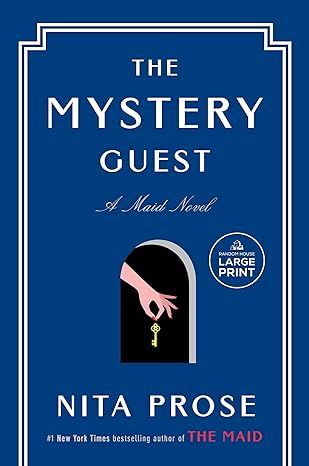
The Mystery Guest: A Maid Novel (Molly the Maid)
4.3
-
9,844
$14.99

Bright Young Women: A Novel
4.2
-
8,485
$14.99

The Wager: A Tale of Shipwreck, Mutiny and Murder (Random House Large Print)
4.5
-
28,672
$14.99

Hello Beautiful (Oprah's Book Club): A Novel (Random House Large Print)
4.4
-
79,390
$14.99
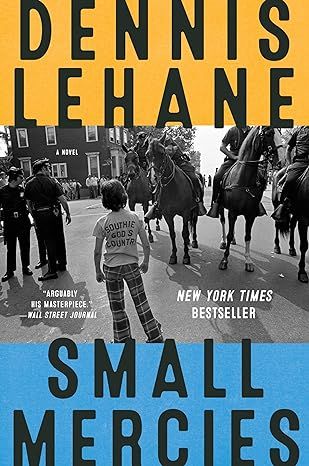
Small Mercies: A Detective Mystery
4.5
-
16,923
$10.00

Holly
4.5
-
31,521
$14.99

The Covenant of Water (Oprah's Book Club)
4.6
-
69,712
$9.24
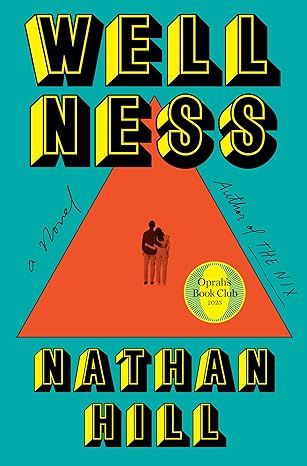
Wellness: A novel
4.1
-
3,708
$14.99
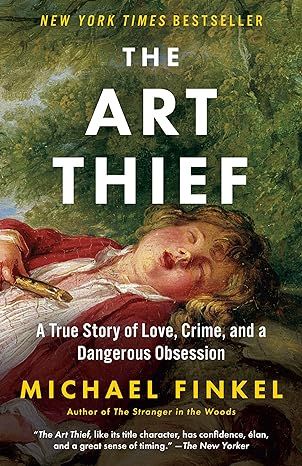
The Art Thief: A True Story of Love, Crime, and a Dangerous Obsession
4.3
-
4,805
$14.99

The Berry Pickers: A Novel
4.5
-
14,209
$14.99

Elon Musk
4.7
-
15,272
$16.99

Just for the Summer
4.6
-
19,524
$11.99

Fourth Wing (International Edition)
4.8
-
206,495
$7.95

Remarkably Bright Creatures: A Read with Jenna Pick
4.6
-
65,556
$15.80
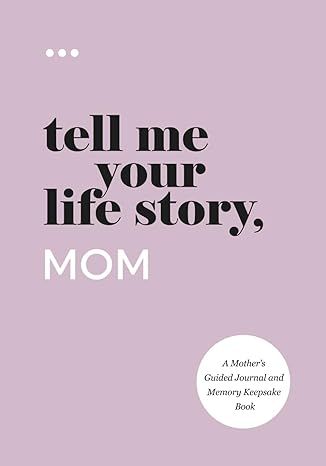
Tell Me Your Life Story, Mom: A Mother’s Guided Journal and Memory Keepsake Book (Tell Me Your Life Story® Series Books)
4.7
-
5,107
$11.24
